In 2017, PennDOT, in conjunction with the Federal Highway Administration (FHWA) and the PA SHPO, published the Metal Truss Bridge Management Plan (Management Plan). This plan, designed to serve as an ongoing planning tool, was the result of a multi-year effort to address the accelerating loss of historic metal truss bridges throughout the state. Now, roughly six years after the publication of the official document, PennDOT would like to provide an update.
The Management Plan has two overarching goals. The first goal is for PennDOT to take sensible measures to extend the useful life of historic metal truss bridges. The second goal is for PennDOT to seek ways to maximize the chance of metal truss bridge rehabilitation for transportation needs. Elements of the plan included the creation of a maintenance manual and a National Register of Historic Places evaluation and prioritization.
Following the publication of the plan, PennDOT overhauled its bridge marketing/adaptive use program and sought a funding source to support metal truss bridge projects.
Maintenance Manual
The Truss Maintenance Manual, one of the first documents created as part of the Management Plan, supports the first goal of helping to extend the life of metal truss bridges by encouraging appropriate and timely care and maintenance. This document provides guidance to bridge owners, many of which are counties or local municipalities on how to maintain their historic resources. The manual includes recommendations for specific kinds of regular care, such as clearing debris, annual bridge washing, and maintenance of decks, joints, and drains. The manual also includes information on basic rehabilitation treatments including deck replacement, floor system upgrades, and truss member strengthening.
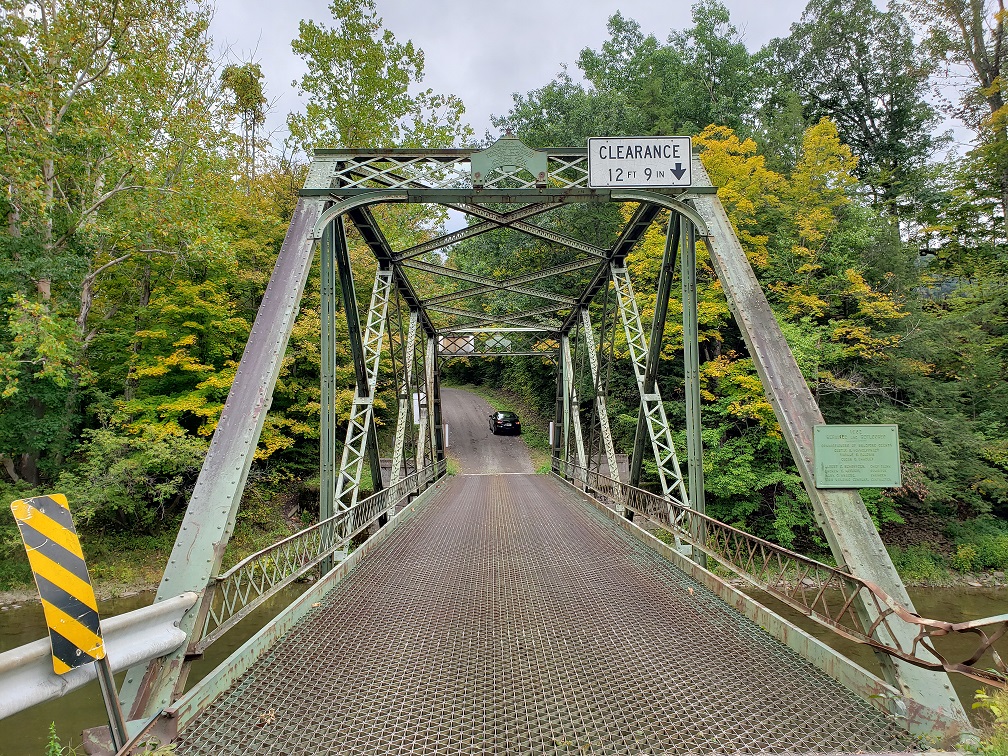
Cons Road Bridge in Franklin Township, Bradford County. Photograph by Veronica Martin.
National Register Evaluation and Prioritization
The National Register evaluation and prioritization, conducted and completed by the PA SHPO in 2017 with assistance from PennDOT, involved reevaluating the remaining metal truss bridge population for National Register of Historic Places eligibility. At the time of the 2018 evaluation, Pennsylvania had 414 metal truss highway bridges, including roughly 181 bridges determined eligible for listing or listed in the National Register.
Following the evaluation, the PA SHPO created a preservation prioritization system and ranked the eligible or listed bridges as exceptional, high, or moderate preservation priority based on their design, type, character defining features, and other attributes. Exceptional and high bridges are usually rare, one of a kind, or outstanding bridges within the remaining metal truss bridge population.
PennDOT and the PA SHPO reviewed the remaining metal truss bridge population for National Register eligibility again in 2023 and found that 43 bridges more bridges had been lost in the last five years, bringing the overall population to 372. Of those lost, 21 were eligible for or were listed in the National Register. Thus, 208 eligible or listed metal truss bridges remain within Pennsylvania. This number is a slight increase from the previous 181 due to the reevaluation process.
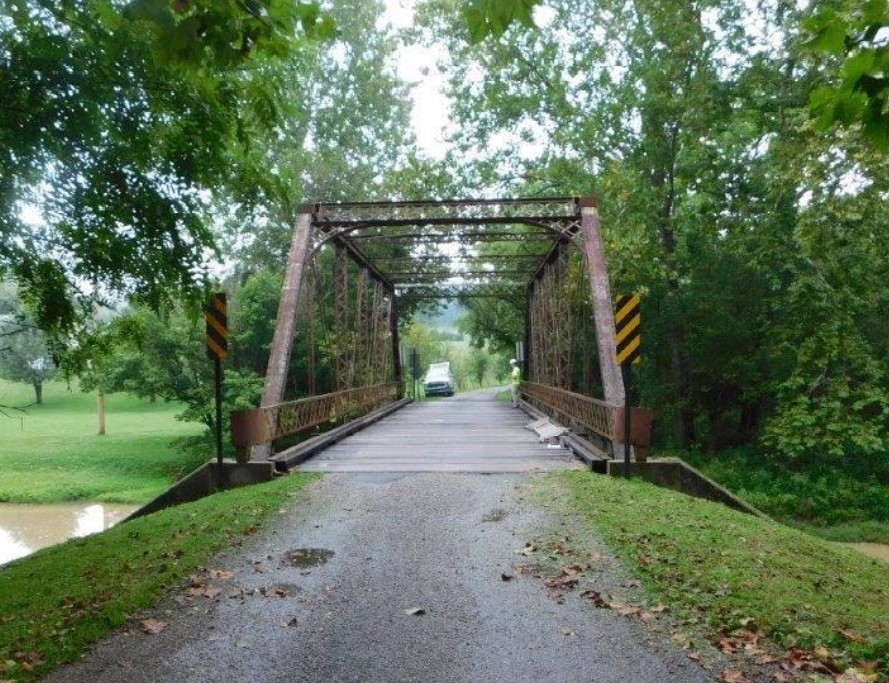
Iams Hill Road Bridge in Amwell Township, Washington County. Photograph by PennDOT.
Bridge Marketing/Adaptive Use
When a historic metal truss bridge can no longer meet the transportation needs of its existing location through rehabilitation, PennDOT encourages the adaptive use of the bridge. To better understand which bridges could continue to meet the needs of their existing locations, during the development of the Management Plan, PennDOT met with local bridge owners, planning partners, including MPOs and RPOs, and interested parties to discuss the locally owned eligible or listed metal truss bridges. These meetings laid a solid foundation for the Management Plan to be used as an ongoing planning tool and provided PennDOT with valuable information about how historic metal truss bridges could be impacted in the future.
Following these meetings, historic metal truss bridges that were unable to meet the transportation needs of their crossings, immediately or in the near future, were added to PennDOT’s Bridge Marketing/Adaptive Use program. Through this program, PennDOT tries to match metal truss bridges with potential new owners such as trail organizations, local parks, nonprofits, and private citizens. In some cases, it’s possible for a bridge to remain in place to serve as a pedestrian crossing, but in most cases, the metal truss bridge is moved to a new location.
Since 2017, PennDOT has championed several successful adaptive use projects including two bridges rehabilitated in place for pedestrian use and four bridges moved to new locations. For more details about PennDOT’s successful adaptive use projects, check out PennDOT’s Bridge Success Stories ERSI story map! PennDOT hopes to add even more adaptive use projects in the future.
Historic Metal Truss Bridge Capital Rehabilitation Program
During meetings with local owners, PennDOT and the PA SHPO heard the same concern again and again: the cost to rehabilitate metal truss bridges was more than local owners could afford. Thus, PennDOT and the PA SHPO sought a funding program to help ease the financial strain on local owners while promoting the preservation of historic transportation resources.
In 2021, the Historic Metal Truss Bridge Capital Rehabilitation Program was created to promote the rehabilitation of historic metal truss bridges for continuous vehicular use. The program includes $18 million spread over ten years. Funding for the program comes from Federal Surface Transportation Program (STP) discretionary funding (SPIKE funds) and does not require a local match by the bridge owner. The program can also provide limited funds for adaptive use projects in cases where there’s a funding gap.
In 2023, the Historic Metal Truss Bridge Capital Rehabilitation Program is funding three metal truss bridge rehabilitation projects and helping to support one adaptive use project.
The list of rehabilitation projects includes:
- Cons Road Bridge (Bradford County Bridge #13) in Franklin Township, Bradford County
- Iams Hill Road Bridge (Evans Bridge, Ten Mile Creek Bridge No. 40) in Amwell Township, Washington County
- Valley Cross Road Bridge (Township Road 385 Bridge) in Keating Township, McKean County
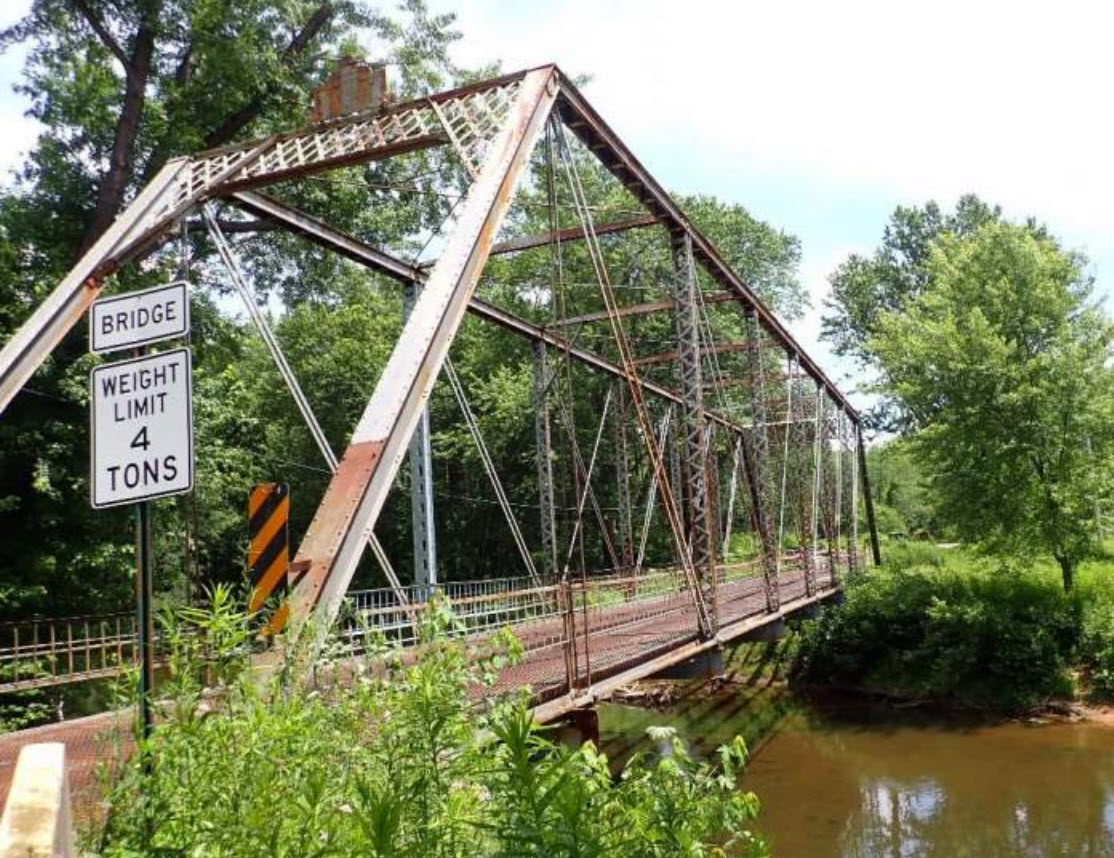
Valley Cross Road Bridge in Keating Township, McKean County. Photograph by PennDOT.
The list of adaptive use projects includes:
- Sheepford Road Bridge (Old Forge Road) in Fairview Township, York County
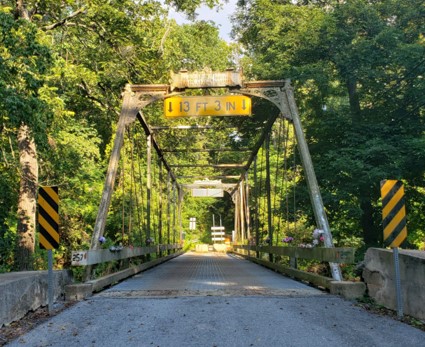
Sheepford Road Bridge in Fairview Township, York County. Photograph by Veronica Martin.
Looking to the Future
PennDOT will continue to use the Metal Truss Bridge Management Plan as a planning tool and will strive to meet the plan’s overarching goals. PennDOT and the PA SHPO are currently looking to establish a second funding source focused on supporting adaptive use projects.
PennDOT looks forward to providing an update in another six years, but in the meantime, keep an eye on PennDOT’s Success Story ERSI story map for the latest adaptive use or rehabilitation project.
________________________________________________
Today’s post is by Guest Contributor Veronica Martin. Veronica is an Architectural Historian with PennDOT District 8-0.
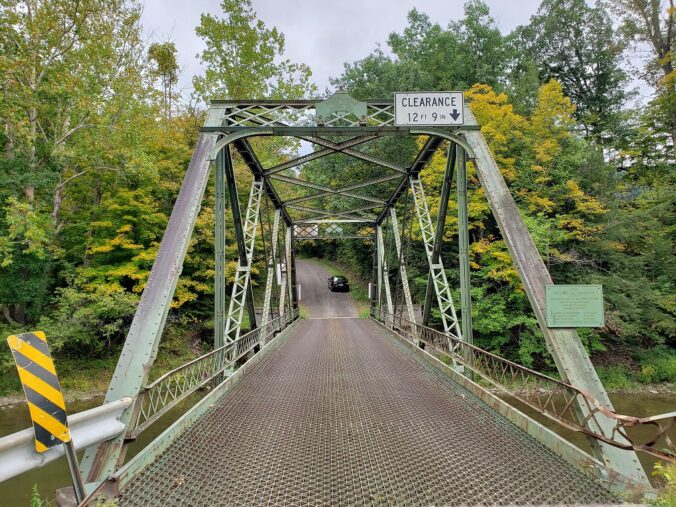
There is one on Dewey road Leboeuf township Waterford,Pa that is in dire need of repair the township could not afford repairs so closed the road It sure would be nice to see it preserved in this township it just sits and someone moved the cement roadblocks some so Amish could get buggies through but it wont last this way forever
https://preservationerie.org/2019/11/dewey-road-bridge/
More info : There is also a stone quarry just before the bridge turning off from stone quarry road to dewy road the quarry square cut blocks were used on a few houses and the Eagle hotel in Waterford
https://fortleboeufhistory.com/campus/eagle-hotel/
As a lifelong traveler of Pennsylvania’s back country roads, I am delighted that some of these wonderful old bridges are being restored, however slowly. A huge thank-you to all those who are responsible for saving these historic treasures.